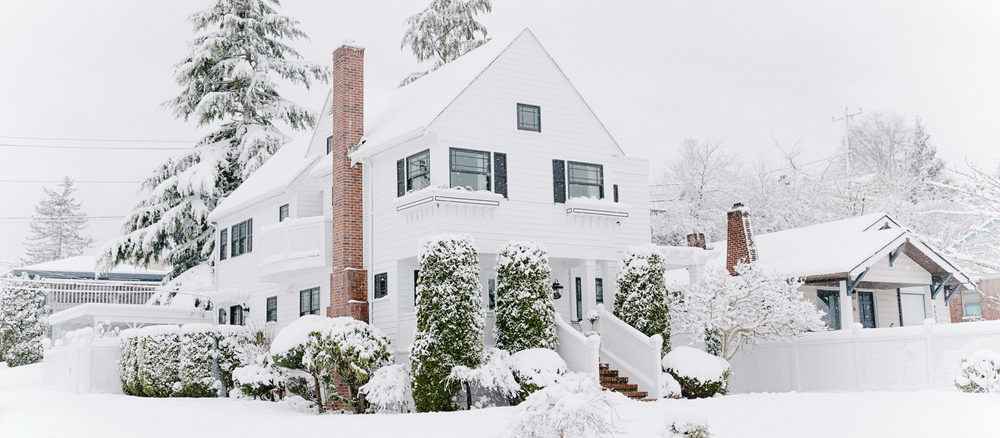As the colder months approach, ensuring that your propane-powered home is winter-ready is crucial for both comfort and safety. Propane is a reliable, efficient fuel that can keep your home warm, water hot, and appliances running smoothly, even during the harshest winter weather. Whether you're a new propane user or a seasoned homeowner, this guide will help you prepare your propane-powered home for winter.
Why Propane is a Great Choice for Winter Heating
Propane is an energy-efficient, cost-effective fuel that’s cleaner than many other fossil fuels. It’s commonly used for heating homes, powering stoves, water heaters, fireplaces, and even backup generators. Here are a few reasons propane is perfect for winter:
- Efficient heating: Propane furnaces produce hotter air and heat homes faster than electric heat pumps.
- Cost savings: Propane is generally more affordable than electricity, especially during peak winter months.
- Eco-friendly: Propane burns cleaner than many other fuels, producing fewer emissions.
Steps to Get Your Propane-Powered Home Ready for Winter
1. Check Your Propane Tank Levels
The last thing you want during a cold snap is to run out of propane. Propane tanks should be filled to at least 30% of their capacity before the winter season. If you're not sure how much propane is left, most tanks have a gauge that shows the percentage remaining. It’s a good idea to schedule regular deliveries with your propane supplier to ensure your tank stays topped up throughout the winter. If you sign up with Tankfarm you don't have to ever worry about your propane levels with their wireless meters that will monitor your propane levels and ensure you never run out.
2. Schedule a Pre-Winter Inspection
Before winter hits, have your propane system inspected by a licensed technician. A professional will check for any leaks, ensure your appliances are working efficiently, and perform routine maintenance on your furnace or boiler. This inspection will not only ensure your safety but also help you avoid costly repairs during the peak of winter.
Key areas to inspect include:
- Propane tanks: Check for any signs of rust or damage.
- Valves and connectors: Make sure there are no leaks.
- Appliances: Verify that your furnace, water heater, and other propane-powered appliances are functioning properly.
3. Test Your Heating System Early
Don’t wait until the first freezing night to find out that your heating system isn’t working. Turn your system on before the cold weather sets in to ensure it heats up quickly and efficiently. Listen for any strange noises and check for uneven heating in different parts of your home.
If you notice any issues, contact a professional to inspect and service your system before winter.
4. Install or Inspect Carbon Monoxide Detectors
Carbon monoxide (CO) is a colorless, odorless gas that can be deadly if inhaled. Propane is generally a safe fuel, but like any fuel-burning system, it can produce CO if something goes wrong. That’s why it’s essential to have working carbon monoxide detectors in your home, especially near bedrooms and on each level of your house.
Test your detectors and replace the batteries before winter begins. If you don’t have CO detectors, install them immediately.
5. Prepare for Power Outages
Winter storms can often lead to power outages. While propane appliances typically don’t rely on electricity, your furnace may need it to run. Consider investing in a propane-powered generator as a backup power source. These generators can keep essential appliances like your refrigerator, lights, and even your heating system running during a blackout.
6. Protect Your Propane Tank
Snow and ice can damage your propane tank or restrict access to it. To prevent this, clear snow and ice off your tank and from around any outdoor vents or pipes. If heavy snow is forecasted, make sure your propane tank is easily accessible to delivery trucks.
Additionally, consider adding a weatherproof cover to your tank to protect it from the elements.
7. Seal Drafts and Improve Insulation
Even with an efficient propane heating system, drafts and poor insulation can make it harder to keep your home warm. Inspect your windows, doors, and walls for any gaps or drafts. Seal them with weather stripping or caulk to prevent cold air from entering your home and warm air from escaping.
Check your attic and walls for proper insulation, as well. Improving insulation can reduce heat loss, making your propane system more efficient and helping you save on energy costs.
8. Consider Upgrading to a Smart Thermostat
A smart thermostat can help you regulate your home’s temperature more efficiently, saving you money on propane and keeping your home comfortable throughout the winter. You can program it to lower the heat when you’re away or asleep and increase the temperature when you’re home, optimizing propane usage.
Many smart thermostats are compatible with propane heating systems and can be controlled remotely through a smartphone app.
Safety Tips for Winter Propane Usage
- Never store propane tanks indoors: Always keep your propane tanks in a well-ventilated outdoor area.
- Be aware of propane odor: Propane has a distinct rotten-egg smell added to it for easy detection. If you smell it, leave the area immediately and contact your propane supplier or emergency services.
- Maintain a clear area around appliances: Keep flammable materials away from propane-powered appliances and ensure proper ventilation.
Final Thoughts
Preparing your propane-powered home for the winter season is essential for comfort, safety, and energy efficiency. By taking the time to inspect your system, top off your tank, and make a few home improvements, you can enjoy a warm and worry-free winter.
Stay safe, stay warm, and let propane power your winter with confidence!




